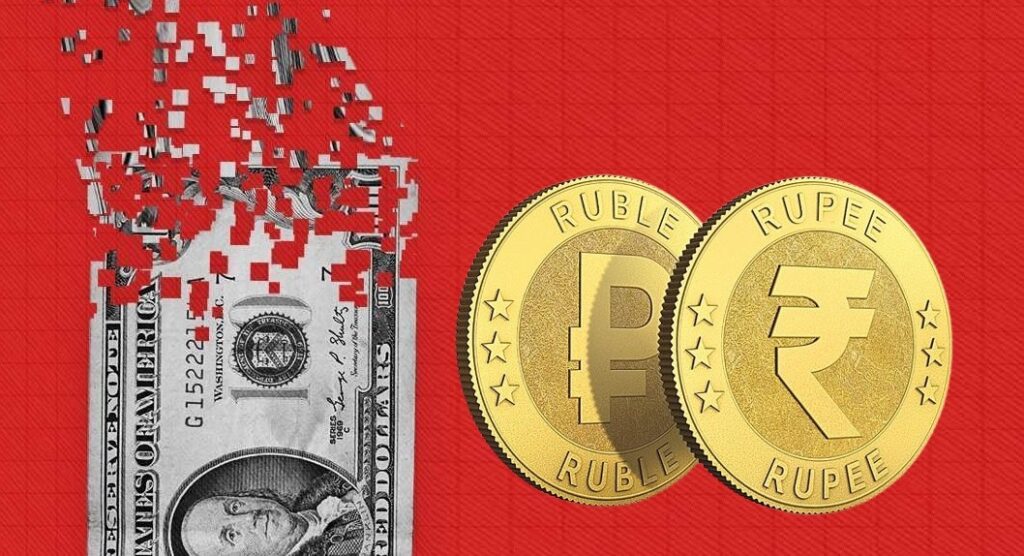
With the increasing trend of de-dollarization that we see in recent times, as a critical shock to the West and the dominant banking systems of the world Russia’s top lender, The Sberbank has introduced the Indian rupee as means of deposit and also as means of expanding the foreign currencies available to Moscow. This can in a way be seen as means for facilitating rupee-dominated trade and currency transactions which have increased in the past year due to the Western sanctions imposed on Russia after the war in Ukraine began.
The measure may seemingly help India in maintaining and aiding good ties with Russia, especially during challenging times. Sberbank is already known for having almost around 100 million already offering deposits in Chinese Yuan and UAE Dirhams. The move in itself helps boost alternative currencies for trade at a time the world remains entangled in the realm of conflict and trade wars. As highlighted the bank supports the process of de-dollarization
The State Bank of India has come forward for facilitating the rupee transaction with Russia, a move that also seemed to bring a spark to other banks. More importantly, it was the Reserve Bank of India the central bank of India, that Issued a notice to its lenders to introduce arrangements for trade import and exports in rupees a move that would reduce our dependence on the dollar and increase trade with Russia.
At the same time, Indian exports have also slumped about one-third of what they used to be as a result of the sanctions imposed on Moscow. The bank also put out in a statement that it would raise the deposits of dirhams for a period of 100 days apart from the Chinese yuan. This move could potentially boost India’s economy to 5 trillion dollars in the current financial year potentially meaning that Indian companies might also look to switch to Asian currencies in order to facilitate trade between India and other countries.
Apart from Sberbank, 9 other Russian banks have also decided to facilitate special accounts for a smooth Indo-Russian trade. The whole technique allows transfer and trade to occur without double-digit conversion which will simplify the trade with India. It also helps fix the price of the product and receive the payment from the international market in one’s own national currency.
However, both India and Russia have decided to suspend bilateral trade in rupees after failed months of negations between the two governments. This will be a setback to the trade between the two buying oil and coal at cheaper rates was beneficial to both. Another reason, though trivial, for the fall in trade, is the surplus in the commodity benefiting only Russia at the cost of India.
Yet another reason for the widening trade gap between both nations is that the rupee is not fully convertible and that India’s share of the total goods is only about 2%, needlessly requiring the other countries to hold the rupee as a medium of their transaction. Thus it is rightly hoped that an effective solution to the issue is found immediately in order to bridge the gap and the surplus between both nations. Though trade with Russia has continued, payments on trade have been occurring using currencies of 3rd countries. Indian traders have resorted to trade settlements outside Russia as there are no limitations to the use of transaction methods such as SWIFT. Hence trade is being made through third countries, including China, so as to route it for their offset.
(Ashish is pursuing a post-graduation in International Relations. His areas of interest include defence, strategic cooperation, International affairs, Intelligence – Counter intelligence & Analytical Investigation. Opinions expressed are the author’s own)
